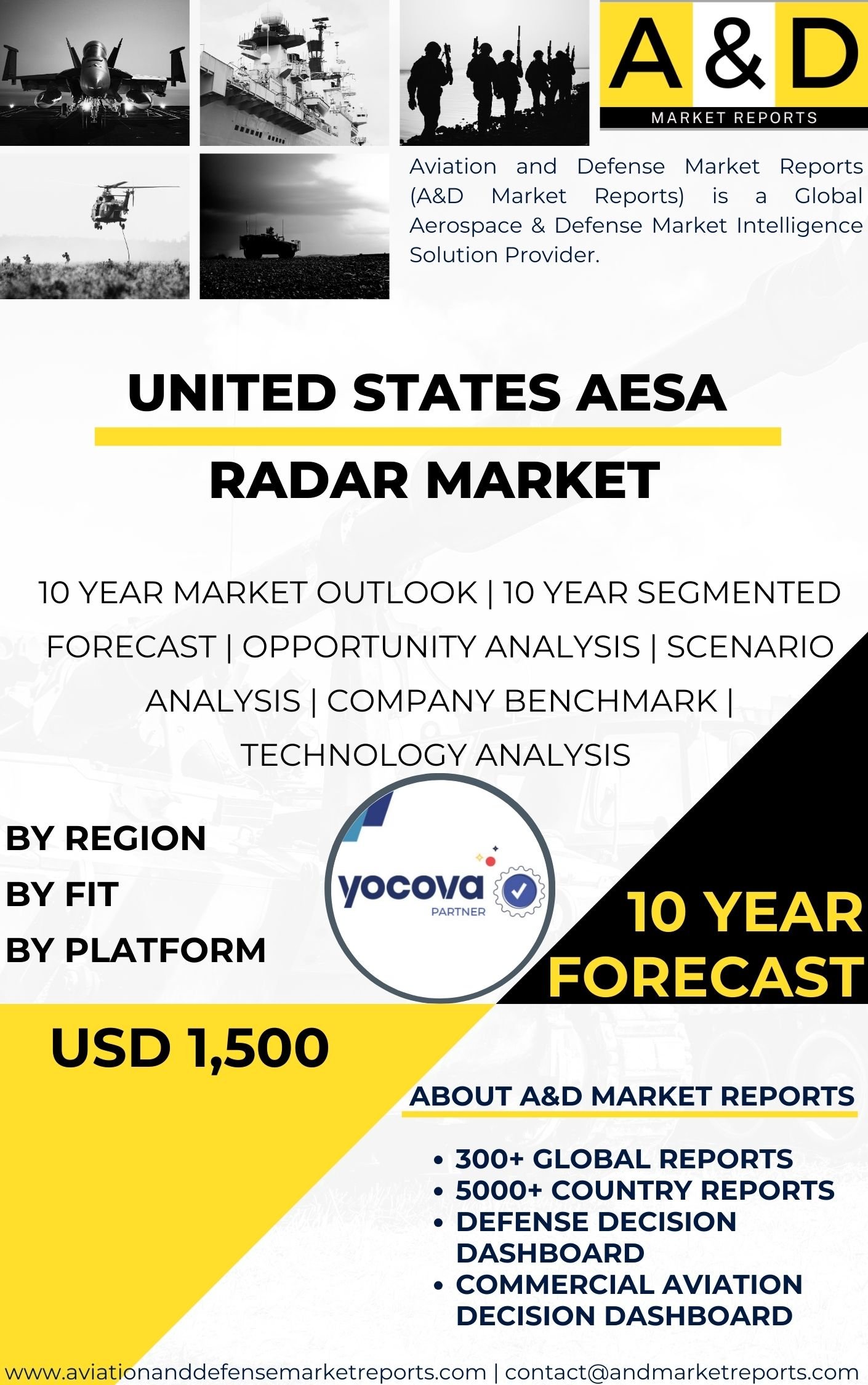Description
United States AESA Radar Market
The United States has been a pioneer in the development and deployment of advanced radar technologies, and Active Electronically Scanned Array (AESA) radar is no exception. AESA radar represents a significant leap forward in radar technology, offering enhanced capabilities, improved performance, and increased versatility compared to traditional mechanically scanned radar systems. This article will explore the development, features, and applications of United States AESA radar Market in the, highlighting its impact on military and civilian domains.
AESA radar technology traces its origins to the late 1950s, but significant advancements occurred in the 1990s and 2000s when the U.S. military began to explore and invest in AESA-based systems. Traditional radar systems employ a mechanically rotating antenna to scan the airspace, which limits their speed, accuracy, and resistance to electronic jamming. AESA radar, on the other hand, uses an array of small solid-state transmit/receive modules to electronically steer and focus the radar beam without moving parts, offering several advantages.
One of the primary benefits of AESA radar is its electronic scanning capability. The rapid and precise beam steering enables AESA radars to perform multiple tasks simultaneously, such as tracking multiple targets, scanning for threats, and providing search and surveillance capabilities. This agile beam steering significantly enhances situational awareness and reaction times in both military and civilian applications.
The U.S. military has embraced AESA radar technology across various platforms. For example, in the aviation domain, AESA radars have been integrated into fighter aircraft such as the F/A-18E/F Super Hornet and the F-35 Lightning II. The AESA-equipped radars offer greater detection ranges, improved target identification, and enhanced resistance to jamming, giving U.S. fighters a substantial advantage in air-to-air and air-to-ground missions.
Additionally, AESA radars have been deployed on airborne early warning and control (AEW&C) aircraft, such as the E-2D Advanced Hawkeye. These platforms provide critical surveillance and command and control capabilities, enabling the U.S. military to monitor large areas of airspace, detect and track potential threats, and coordinate friendly forces.
AESA radar has also found extensive use in ground-based air defense systems. The Patriot Advanced Capability (PAC-3) missile defense system utilizes AESA radar to track and engage incoming ballistic missiles and hostile aircraft. AESA technology allows for rapid target acquisition and precise tracking, enhancing the system’s effectiveness in defending against advanced threats.
Moreover, the U.S. Navy has integrated AESA radar into its Aegis combat system, used on guided-missile destroyers and cruisers. The Aegis system, equipped with AESA radars, provides comprehensive area air defense capabilities, protecting naval task forces and assets from various airborne threats.
Beyond the military domain, AESA radar technology has found applications in civilian sectors as well. In air traffic control and surveillance, AESA-based radars offer improved accuracy and coverage, enhancing aviation safety and efficiency. Additionally, AESA radar technology is employed in weather radar systems, enabling meteorologists to detect and track severe weather events with greater precision.
AESA radar’s modular design also facilitates easier maintenance and upgrades, reducing lifecycle costs and extending the radar system’s service life. As AESA technology matures, further innovations are expected to enhance its capabilities and integration into future military platforms.
Despite its numerous advantages, AESA radar technology also presents some challenges. Its complexity and cost can be higher compared to mechanically scanned radars, making it important to strike a balance between performance and affordability. Furthermore, AESA radars are vulnerable to certain electronic warfare (EW) techniques, such as jamming and spoofing, requiring continuous advancements in electronic countermeasures and signal processing algorithms.
In conclusion, AESA radar technology has significantly advanced radar capabilities in the United States, transforming military operations and enhancing national security across various domains. The agility, precision, and versatility offered by AESA radar Market have made it a crucial component of modern defense systems, giving the U.S. military a significant advantage in air and missile defense, situational awareness, and surveillance. Continued investment in AESA technology and its integration into diverse platforms will ensure that the U.S. remains at the forefront of radar innovation, reinforcing its leadership in defense and security technology on the global stage.




